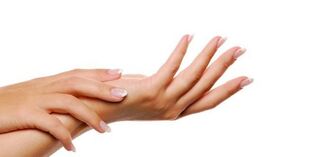
The finger is the main tool, with which we can perform various work functions. Therefore, when the joints of the fingers are injured, it is difficult to perform their direct duties or cope with tasks. Medical help is needed when the initial pain occurs, otherwise, in the later stages, it may lead to serious consequences related to joint destruction.
What should I do if my finger joints are injured? It is necessary to contact a rheumatologist for examination and treatment as soon as possible. Only after the expert has determined the real cause of the pain and confirmed the diagnosis, can he choose an effective treatment plan and prescribe the necessary drugs.
Why are finger joints injured-the main reason
There are many reasons for joint pain. The factors leading to joint pathological changes are:
- The influence of the external environment (for example, hypothermia, physical injury);
- Professional factors related to increasing joint stress;
- Hormonal imbalance; Immune and endocrine system diseases;
- genetic factors;
- Chronic infectious diseases.
The joints of the fingers are often injured during pregnancy. This situation can be explained by the lack of calcium, which is most obvious during this period. Increased production of the hormone relaxin (which negatively affects the state of cartilage tissue) and the weakened immunity associated with the remodeling of the female body during pregnancy also play a role.
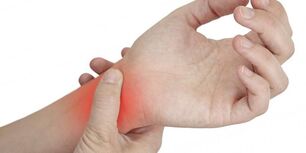
In addition, experts have discovered many diseases that cause joint deformation and destruction accompanied by a characteristic symptom-pain. These are pathologies, for example:
- Infectious arthritis;
- Osteoarthritis;
- Rheumatoid Arthritis;
- Psoriatic arthritis;
- rhizome disease;
- Gout;
- stricture ligamentitis.
Let us introduce in detail the symptoms of diseases that cause joint damage, and discuss the diagnosis and treatment of such pathologies.
Finger joint injuries-what diseases can we talk about
The cause of finger joint pain is probably related to one of the following diseases:
Rheumatoid arthritis is a chronic inflammatory autoimmune disease related to damage to the small joints of the arms and legs. The inflammatory process usually affects the metacarpophalangeal joints of the middle and index fingers. If your fingers are swollen in the morning and your joints are injured, it may be a sign of rheumatoid arthritis.
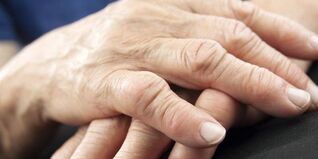
As the inflammatory process intensifies, the skin above the joints swells, turns red, feels hot to the touch, and feels dense nodules under it. The pain is so deep that one cannot make a fist. Rheumatoid arthritis is characterized by symmetrical damage to the joints of the hands. The main symptoms of this disease are joint stiffness in the morning, accompanied by increased pain.
The pain usually subsides at night. The danger of this disease is that it is usually diagnosed at a later stage when the cartilage tissue has been destroyed. If your joints are injured and your fingers become numb, please do not postpone your visit to the doctor, otherwise the neglected inflammatory process can cause the deformities of the fingers and hands and eventually lead to disability.
Psoriatic Arthritis
This is a form of psoriasis, when in addition to skin manifestations, the distal (nail) joints of the phalanges of the fingers are also involved in the inflammatory process. At the same time, it was observed that their shape changed, they swelled, swelled, did not bend, the skin became red and inflamed, and the fingers themselves became like sausages.
If the joints of the fingers of the right hand (for example, index finger and little finger) are injured, by the way, the joints of the fingers of the left hand will be injured, so the initial diagnosis can be made with confidence. In psoriatic arthritis, the inflammatory process will be asymmetric, that is, on the other hand, the phalanx of the middle finger and ring finger will be affected.
Infectious and septic arthritis
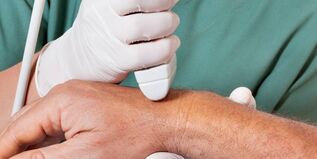
These diseases usually appear with severe joint pain and general deterioration, manifested as fever, chills, fever, and symptoms of poisoning.
Inflammation of joints with viral or bacterial properties is usually related to damage to one joint, in which the infectious agent penetrates and damages the skin. But it is not uncommon. Polyarthritis can infect multiple joints at the same time. In this case, inflammation is particularly obvious.
Osteoarthritis
This disease is not inflammatory in nature, it manifests as joint deformities, gradually thickening and restricted movement. If the joint of the finger is injured during the bending process, the finger will have a spindle shape with a characteristic thickening in the middle, which indicates the development of osteoarthritis.
The disease is a typical disease of the elderly, more common in women after the age of 40, which is related to changes in hormone levels and the onset of menopause. In addition, occupational factors, metabolic disorders and genetic susceptibility may also contribute to the development of osteoarthritis.
Gout
This disease is caused by metabolic disorders in which urate is deposited in the joints. In most cases, men between the ages of 40 and 60 are diagnosed with gout due to excessive consumption of fat, spicy and salty foods and addiction to alcohol.
The lesion mainly involves the toes, but due to the atypical course of the disease, the metacarpophalangeal joints of the thumb of the hand may also be affected. The pain of gout is burning and unbearable. They vary in strength and are accompanied by skin swelling and redness in the affected joint area.
stricture ligamentitis
This pathological condition looks like osteoarthritis or arthritis. Therefore, X-ray examination is necessary to confirm the diagnosis. The main symptoms are: pain when the fingers are bent and stretched. Sometimes the joints may get stuck in the bent state, and a certain amount of effort must be made to stretch them.
Therefore, if your middle finger joint is injured and you hear a characteristic clicking sound during its extension, you should seek medical attention as soon as possible. As the inflammatory process intensifies, numbness of the fingers appears, burning sensation, swelling, and blue complexion in the affected area.
Rhizome disease
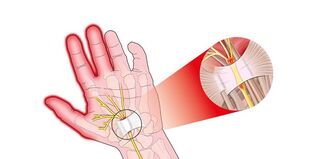
If the thumb joint on the hand is injured, it may be a sign of this pathology. The disease is usually associated with persistent joint overload, infection or traumatic penetration. A common symptom is increased pain when performing certain operations (for example, turning the door handle, turning the key in the lock, opening the lid).
The disease must be treated as soon as possible, otherwise the joints will be deformed and the pain will continue, even when resting. Over time, bone growth forms at the root of the thumb, which actually makes the hand unable to move and causes disability, because the slightest movement can cause unbearable pain.
Carpal tunnel syndrome
This disease is neurological in nature because it develops due to compression of the median nerve that passes through the wrist. This is due to the regular load on the joints and ligaments of the hand. At risk are people (shorthand writers, computer technicians, musicians, artists) who are forced to work with their fingers constantly because of their profession. Pain is usually confined to the area of the thumb and index finger, and the accuracy of certain movements is impaired. In addition, compressed nerves can cause poor circulation and numbness in the fingers.
Nerve compression in the vertebral body, bursitis, rheumatism, unhealthy lifestyles and other factors may cause hand joint pain. It is important to pay attention to the alarm symptoms in time and seek qualified help.
If a finger joint is injured, which doctor will help?
In the initial stage, you can make an appointment with the therapist, who will refer you to a narrow specialist (doctor-rheumatologist) after a memory test. It is this expert who specializes in joint diseases, and he will provide the necessary help and make an accurate diagnosis.
In addition, you may need to consult a surgeon or neurologist. According to the results of the examination, the doctor will prescribe the necessary treatment methods based on the cause of the joint injury, the severity of the symptoms, possible contraindications and the patient's personal characteristics.
Diagnosis
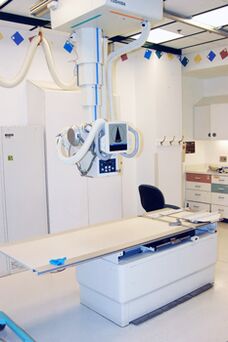
The activities required for a correct diagnosis are visual inspection, laboratory tests of blood and urine, and referral of patients for X-ray examination. X-ray examination of both hands usually gives the necessary concepts of pathological nature and degree of joint damage.
In order to obtain the most complete information about the nature of pain and the cause of the inflammatory process, the doctor can ask the patient to have an ultrasound scan, computed tomography (CT) or magnetic resonance imaging (MRI). These are the most modern and useful research methods that allow you to identify the smallest changes in the earliest stages of the disease and help prevent the further development of the disease and the serious consequences associated with joint deformation and destruction.
Sometimes, if you suspect gout, a special blood test will be done to check the uric acid level. In order to determine the pathological changes that occur in the bone tissue, a special dye contrast imaging procedure is used.
Nowadays, the most effective diagnostic method is electrography, which was used a few years ago. Through this process, you can examine the part of the spine responsible for upper extremity function and identify any pathological deviations that do not comply with the norms at the earliest stage.
Treatment method
After diagnosis, the doctor will choose a treatment plan based on the cause of the joint pathological changes. If the joints of the hands are injured, the treatment principles should be formulated according to the use of drugs, physical therapy procedures, therapeutic exercises, diet and lifestyle adjustments.
If an inflammatory process occurs, the doctor will prescribe painkillers, hormones or non-steroidal anti-inflammatory drugs. It can be a systemic medication (oral tablets) or topical medications in the form of ointments, creams, and sprays to help quickly relieve pain. The doctor may prescribe hormone drugs in the form of injections to relieve joint pain. Such a procedure can quickly relieve the patient's condition and help the disease turn into a remission state. For infectious arthritis, antibacterial agents need to be prescribed.
The reduction of chondroitin levels in articular cartilage tissue promotes the development of degenerative diseases of the musculoskeletal system. Therefore, the drug prescribed for patients-cartilage protective agent, can prevent further destruction of joints and restore the structure of cartilage tissue.
Physiotherapy procedures

Physiotherapy is an important aspect of complex treatment. These include novocaine electrophoresis, UHF, magnetic therapy, laser therapy, dual pulse therapy, and phonation therapy. The number and duration of treatment are determined by the doctor individually.
Therapeutic exercises and massage are necessary to restore joint mobility, improve blood circulation and metabolic processes. During the remission of the disease, it is recommended that patients undergo balneotherapy (treatment with natural mud) and manual treatment. The hot spring treatment brings you a favorable climate zone and can bring very good results.
In addition, patients are advised to maintain a healthy lifestyle, stop alcohol and smoking, and observe some dietary restrictions. It is recommended to completely exclude fatty meat and fish from the diet, and give up dairy products and fermented dairy products with high fat content. No smoking, meat, spicy, salty, pickled dishes, seasonings, mayonnaise, citrus fruits, baked goods, strong tea and coffee. Do not eat foods containing oxalic acid (rhubarb, sorrel, spinach).
The daily menu should include low-fat yogurt drinks, salads made of herbs, fresh vegetables and vegetable oil, lean meat, seafood, and low-fat fish. Fruits, berries, nuts, ginger, figs, natural vegetable oils rich in omega fatty acids (especially linseed oil and olive oil) are useful. It is recommended to increase the amount of drinking water, at most 1. 5-2 liters of clean drinking water per day.
Alternative Therapy
Today, on the pharmacy shelves, you can find many innovative products designed to treat joint pain. The most suitable drugs will be selected by experts.
Traditional Medicine Recipes
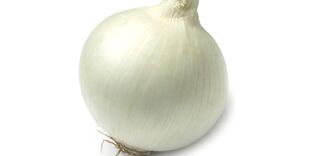
Folk remedies for finger joint pain will complement the main treatment plan, bring relief and accelerate recovery.
- If the inflammatory process is aggravated, you can dip gauze in apple sore or vinegar, and then dip it in cider or vinegar. This will help reduce pain, burning and swelling. You can use roasted onions, boiled potatoes or heated sea salt and rubbed with cedar oil to make a compress.
- Roasted onion ointment. The onions are baked in the oven, cooled, and chopped. Mix the obtained material with the same amount of liquid honey and vegetable oil (1 teaspoon each), add 10 grams of beeswax and 20 grams of golden beard dry herbs. The composition is boiled in a water bath, stirring continuously, until the mixture becomes uniform and thick. Remove the finished ointment from the heat and let it cool slightly. Rub into the sore joints in a warm form and put on cotton gloves. This process is best done at night.
- Honey and mustard ointment. To prepare the ointment, mix 5 grams of mustard with 1 teaspoon of syrup. For honey, add a tablespoon of olive oil and 20 grams of dried leaves of Caucasus hellebore. The mixture is then evaporated to a thick and uniform state in a water bath, cooled and used for daily treatment of diseased joints.
- Compression. Compresses based on natural ingredients play a special role in relieving pain and inflammation. You can boil potato tubers, crush them, wrap them with gauze, and apply them to the affected area. Ordinary salt preheated in the pot has the same therapeutic effect. Dry heat can help reduce pain and inflammation. It is recommended to use ordinary chalk as a compress. It should be crushed, mixed with any fermented milk beverage, dipped into a gauze napkin, and compressed at night. Steamed oatmeal can also be used for the same purpose.
- Clove tincture. Decoction and infusion have a good anti-inflammatory effect, improve blood circulation and restore the mobility of affected joints. After the lilac blooms, the agent will be prepared in spring. Collect the inflorescence, fill it with alcohol or vodka, and keep it in the dark for 3 weeks. Filter the finished tincture and rub it into the joint pain, then put on gloves to keep your hands warm.
There are many popular recipes for treating joint pain. In order to benefit them, please don't forget to consult your doctor first and get his approval.




























